 February 5, 2015 John E. Ross, KD8IDJ, Editor
| ||||||||||||||||||||
Participation in ARRL Centennial On-the-Air Events Exceeds All Expectations Attendance at the ARRL's on-the-air Centennial celebration in 2014 was through the roof! Approximately 3.5 million contacts were recorded for W1AW portable operations and the Centennial Points Challenge during the Centennial QSO Party last year.
Fusaro said that while award certificates have been printed, the task of checking and double-checking the electronic logs and resolving any anomalies has put an unexpected burden on staff resources. To compete in the Centennial Points Challenge, logs must have been submitted through Logbook of The World (LoTW). The system will automatically look for points-qualifying QSOs from submitted logs and apply them to each participant's Centennial QSO Points total. ARRL Headquarters has been recalculating all submitted scores to come up with final tallies. "Recalculating will allow operators to earn points for contacts they made with stations that were not yet in the database when the logs went into LoTW," Fusaro explained. "Accuracy in fulfilling awards is important, and we need to get this right the first time. It's been a very time and staff-intensive process, researching busted call signs and running down claimed contacts and mode discrepancies for operators." Enhancements to LoTW -- which served as the repository for Centennial QSO Party contacts -- also contributed to the delay. And a few operators logged on paper; those logs were keyed into the system manually. The deadline to submit logs for 2014 via LoTW was January 22, but participants may apply for Centennial awards indefinitely, once the application process is up and running. Operators do not have to use LoTW to apply for Points Challenge certificates or W1AW WAS awards.
QSL cards for W1AW portable and W100AW operations are not yet back from the printer. "We did not plan to have as many W1AW/p operators, which contributed to the bonanza of Centennial QSO Party contacts," Fusaro said. US stations that worked W1AW/p and W100AW during the Centennial may use the Centennial QSO Party web page to request QSL cards via the domestic Incoming QSL Service. Fusaro explained that this is a one-time only use of the QSL Bureau for this purpose, and those who want to receive cards via the Bureau should ensure that their accounts are sufficiently funded, because cards will not be held. Cards destined for stations outside the US will be sent via the QSL Bureau. Participants may also request cards directly, providing one SASE for up to six cards per envelope. W1AW/p and W100AW will not confirm every contact with traditional paper QSL cards, but will verify QSOs for each mode and on most bands on a single card for each weekly operation. Eric Nichols, KL7AJ, Selected as 2014 Bill Orr, W6SAI, Technical Writing Award Winner Eric Nichols, KL7AJ, of North Pole, Alaska, has been named as the winner of the Bill Orr, W6SAI, Technical Writing Award for 2014. Nichols was recognized for his article "Using Your Grid Dip Meter Oscillator," which appeared in the February 2014 issue of QST. The Orr Award is bestowed each year to the QST author who writes an outstanding article or series on new or existing technologies or on methods or means of amateur communication. Articles must be written
in an easy-to-understand style worthy of the Bill Orr "stamp of approval," and they should encourage interest and expand the knowledge and understanding of amateurs who may lack a strong technical background. "Eric's article was chosen, because it did an outstanding job of explaining how to use a device -- the grid dip oscillator -- that has been somewhat forgotten by many amateurs," said Steve Ford, WB8IMY, QST Editor in Chief and ARRL Publications Manager. "Eric did an excellent job of explaining why this device is still useful and how to put it to use." Licensed in 1972 as WN6TEE in California, Nichols is a former broadcast engineer who now works at Eielson Air Force Base. He has written many articles for various Amateur Radio publications over the past 30 years and describes himself as "a fanatic homebrewer and CW freak." Nichols also works as a consultant to the High Power Auroral Stimulation (HIPAS) Observatory, operated by UCLA, and at the High Frequency Active Auroral Research Program (HAARP) facility. He is the author of Radio Science for the Radio Amateur (available from ARRL), Plasma Dreams, and The Opus of Amateur Radio Knowledge and Lore.
The QST editorial staff serves as the selection panel and recommends the winner from a review of the year's QST articles to the ARRL Foundation Board for final approval at its Annual Meeting. The award comprises an engraved plaque and $250, to be presented at an ARRL convention. Established in 1973 by the ARRL, the ARRL Foundation is a separate IRS 501(c)(3) organization that administers programs to support the Amateur Radio community. The Foundation is funded entirely through the generosity of radio amateurs and friends. ARRL Foundation programs for Amateur Radio award scholarships for higher education, grants for Amateur Radio projects, and special Amateur Radio program grants for The Victor C. Clark Youth Incentive Program and The Jesse A. Bieberman Meritorious Membership Program. ARISS Selects 15 Possible ISS Amateur Radio Contact Hosts for 2015 Events Amateur Radio on the International Space Station (ARISS) has selected 15 semifinalists to host ham radio contacts with ISS crew members during 2015. ARISS anticipates that NASA will provide 12 scheduling opportunities for US hosts between May and December. The 15 semifinalists, representing schools and educational "This is a significant step in ARISS's continuing effort to engage young people in Science, Technology, Engineering, and Math activities and raise their awareness of human spaceflight," an ARISS media release said. "ARISS was encouraged by the high level of interest in the education community, evidenced by the significant number of submitted proposals and the quality of the submissions." The 15 finalists are Bay View Elementary School, Burlington, Washington; Corpus Christi Catholic School, Chambersburg, Pennsylvania; Daggett Montessori School K-8, Fort Worth, Texas; Dearborn Public Schools, Dearborn, Michigan; Grady High School Robotics Team, Atlanta, Georgia; Kopernik Observatory & Science Center, Vestal, New York; Maconaquah School Corporation, Bunker Hill, Indiana; Moon Day/Frontiers of Flight Museum, Dallas, Texas; New Mexico Military Institute, Roswell, New Mexico; Pima County 4H/Vail Vaqueros 4-H Club, Tucson, Arizona; Space Jam 9, Rantoul, Illinois; Ste Genevieve du Bois Catholic Elementary School, Warson Woods, Missouri; Tulsa Community College-NE Campus, Tulsa, Oklahoma; United Space School, Seabrook, Texas, and West Michigan Aviation Academy, Grand Rapids, Michigan. 2016 ARISS Contact Proposal Window Opens February 15 The next US ARISS contact proposal window will be open between February 15 and April 15. ARISS is seeking formal and informal educational institutions and organizations, individually or working together, to host an Amateur Radio contact with an ISS crew member between January 1 and June 30, 2016. Crew scheduling and ISS orbits determine the exact contact dates. ARISS is looking for organizations that have the potential to draw large numbers of participants and can integrate the contact into a well-developed educational plan.
FM voice contacts with ISS crew members last about 10 minutes -- the typical length of an orbital pass -- and allow students and educators to interact with the astronauts in a question-and-answer format. ARISS contacts afford an opportunity to learn firsthand from astronauts and cosmonauts what it is like to live and work in space and about ISS research. Students will also have an opportunity to learn about satellite communication, wireless technology, and radio science. Because of the nature of human spaceflight and scheduling complexity, schools and organizations must demonstrate flexibility to accommodate changes in contact dates and times. Amateur Radio organizations around the world, NASA, and space agencies in Russia, Canada, Japan, and Europe sponsor this educational opportunity by providing the equipment and operational support to enable communication between ISS crew and students around the world via Amateur Radio. In the US, ARISS is managed by the ARRL and AMSAT, in partnership with NASA. Details on expectations, audience, proposal guidelines, and proposal form, and dates and times of information sessions are on the ARRL website. E-mail ARISS with any questions. K1N Navassa Island DXpedition Dominates HF Bands The antennas are up, the gear deployed, and all 15 operators are on site and in their chairs. The K1N Navassa Island operation, which came up on 40 and 80 meter CW in the middle of the Super Bowl on February 2, is now a full-blown DXpedition, with stations on the air on as many bands and modes as the team can muster. K1N hopes to remain on the air until February 12. As might be expected with a major DXpedition to the #2 (all modes) most-wanted
DXCC entity, the pileups have been spectacular. While there has been some undesirable behavior and poor operating practice -- such as not paying attention to the operator's instructions -- things have gone fairly smoothly. For many US operators, it's been a matter of "so close, yet so far away," as they plea to be heard from within the din. "It has been very windy and very hot...and very dirty," team member Glenn Johnson, W0GJ, said in a post this week. "We have heavy rains every evening, collected for washing, as we all feel very grubby." Johnson said inclement weather plagued and delayed deployment, and daytime temperatures have been in the 110° to 120° range. Upon arrival the team reported seeing "rats as large as cats, scorpions, and black widow spiders." Initial log uploads to ClubLog have been completed, and the log page on the K1N website activated. The first uploads contain more than 22,000 contacts.
Johnson said that everyone is in good spirits and healthy. "We have been very pleased with pileup cooperation when working the difficult JA/Asia/Oceania windows," he added. "We can hear a din of pileup activity, and, at times, difficult-to-pull-out individual calls on these long hauls." The K1N RTTY operator has asked callers not to include any information beyond a signal report when working the DXpedition on that mode. Including anything more can slow down their QSO rate. Team member Bob Allphin, K4UEE, said deliberate QRM was "at expected levels," and he encouraged operators to fill out a Deliberate QRM (DQRM) report to help isolate the locations of offenders. "There's a DQRM button on every page of our website," he said. "In addition, you can go directly to www.dqrmreport.com and file there." RadioShack's Long, Slow Downward Slide Nears the End The end is near for RadioShack. It seems inevitable that the once seemingly ubiquitous electronics and cell phone retailer will liquidate its assets, after which RadioShack would cease to exist. A number of legal steps would have to come first, including a bankruptcy filing. The New York Stock Exchange (NYSE) de-listed RadioShack on February 2, after the company failed to maintain a required minimum value. BloombergBusiness has reported that behind-the-scenes talks are under way to sell approximately half of RadioShack's owned-and-operated stores to Sprint and shutter the remaining outlets, although other scenarios involving other entities are possible.
The hedge fund Standard General LP loaned the retailer $535 million last fall and would be the lead bidder in a bankruptcy filing and debtor-in-possession financing, BloombergBusiness said. RadioShack once offered entry-level short-wave receivers, Citizens Band gear, a wide array of discrete components -- including transistors, resistors, and capacitors -- and, for a time, a fairly popular 2 meter hand-held transceiver and two different models of 10 meter single-band transceivers, although it failed in its effort to develop and market a VHF/UHF hand-held radio. Over the years, RadioShack has offered fewer discrete components in its brick-and-mortar stores, moving that stock and other products to its online outlet, as it shifted its marketing focus to cell phones, consumer electronics, and various battery-operated gadgets. A year ago, after a dismal holiday showing, RadioShack announced plans to close 1100 stores, including 900 company-owned outlets. Due to the high costs involved with closing the stores, liquidating merchandise, lease penalties, and severances, however, the company has been able to shut down fewer than 200 outlets. RadioShack was reported to have about $60 million in cash heading into the 2014 holiday season. RadioShack has made no comment on the reports. Amateur Radio Payloads Share Ride into Space with Soil Moisture Monitoring Satellite Four NASA Educational Launch of Nanosatellites (ELaNA-X) CubeSats carrying Amateur Radio payloads launched successfully January 31 from California's Vandenberg Air Force Base. The primary
payload for the Delta II launcher was the Soil Moisture Active Passive (SMAP) satellite. The SMAP on-board radar will share Amateur Radio spectrum at 1.26 GHz. Amateur Radio is secondary on the 23 centimeter band, which covers 1240 to 1300 MHz. "This is a good example of a compatible sharing partner," ARRL CEO David Sumner, K1ZZ, observed. "Any interference to amateur communication in the band will be brief as the satellite passes overhead." SMAP and the four CubeSats all deployed successfully. The research CubeSats, launched on behalf of universities, will downlink their telemetry on the 70 centimeter band. The CubeSats and their downlink frequencies (modes) are:
The GRIFEX satellite is a University of Michigan project, in cooperation with JPL, while ExoCube (CP-10) is a space weather satellite developed by the California Polytechnic State University-San Luis
Obispo and the University of Wisconsin in partnership with NASA, and sponsored by the National Science Foundation. The FIREBIRD program is a collaborative CubeSat space weather mission of two CubeSats designed and developed by Montana State University, the University of New Hampshire, The Aerospace Corporation, and Los Alamos National Laboratories -- the FIREBIRD consortium. The FIREBIRD mission is also funded by the NSF. SMAP carries a "synthetic aperture radar." The L band (1.26 GHz) radar is designed to measure backscatter off the Earth's surface. The amount of backscatter returned to the radar changes with the amount of moisture in the soil. RF pulses at this frequency are less affected by weather or by a moderate vegetation cover. The satellite is approximately 425 miles up in a near-polar, sun-synchronous orbit. SMAP also includes a radiometer operating at 1.41 GHz to measure naturally occurring RF energy given off by Earth's surface. Ham Among Devil's Brigade Members to Receive Medal A 90-year-old California radio amateur -- Stan McEtchin, WB6KDZ, of Paradise -- was among the surviving members of the First Special Operations Force (FSSF), known as "The Devil's Brigade," to receive the Congressional Gold Medal on February 3. The medal recognizes the unit's extraordinary heroism and service during World War II.
"We used to go behind the lines at night and sit out there, and we could hear the Germans talking," McEtchin told The Paradise Post. "Our guy would write it down, so we would find out where their guns were and that kind of thing." Montana US Senators Jon Tester and Max Baucus worked for 5 years to honor the unit. "The Devil's Brigade represented the very best of our Greatest Generation that defeated tyranny around the world," Tester said. "The Medal is the highest honor Congress can bestow, and yet, while a small token of this nation's gratitude, it is an everlasting reminder of the sacrifices these men made for all of us." Remarked Baucus, "Without these brave volunteers, there would be no Special Forces today." Based at Fort Harrison in Helena, Montana, the Devil's Brigade was a top-secret combat unit comprising 1800 volunteers from 49 states, the District of Columbia, Canada, and Australia. Their training was the first of its kind, specializing in high alpine combat, covert amphibious landings, parachuting, mountain climbing, among other tactics. By the time the war ended, the Force had suffered 2314 casualties, equating to an astounding 134 percent of its original combat strength. It had captured more than 30,000 prisoners, won five US campaign stars and eight Canadian battle honors. The Force never failed a mission. "The people in this group were not ordinary people," McEtchin told The Paradise Post. "That is the kind of people that they were, they would just succeed at everything they did."
The unit was instrumental in the liberation of Rome, surprising and defeating massive German artillery units located on treacherous mountain peaks and rocky islands, and in freeing communities in southern France and Italy despite bitter resistance and extreme conditions. The Force also engaged in large-scale raids against the infamous German Hermann Goering First Panzer Paratroop Division. The unit paved the way for the nation's modern elite Special Forces, of such highly trained units as the Green Berets and the Navy SEALs. About 75 members of The Devil's Brigade are believed to be still alive. The Congressional Gold Medal is the nation's highest award for distinguished achievement. Past recipients have included members of the Tuskegee Airmen, Gen. Douglas MacArthur, and Jimmy Doolittle's Tokyo Raiders. The Canadian government recognized members of the Force in 2012. The presentation ceremony at Expedition Hall in Washington, DC, was televised on C-SPAN and remains available on the C-SPAN website. Also visit "Suicide Missions: The Black Devils" on YouTube. McEtchin also recalled his World War II experiences in an interview on KHSL's ActionNewsNow. -- Thanks to the Golden Empire Amateur Radio Society (GEARS) Radiator, media accounts Past ARRL Dakota Division Director Howard Mark, K3HM, SK Past ARRL Dakota Division Director Howard Mark, K3HM (ex-W0OZC), of Burnsville, Minnesota, died on January 24. He was 81. An ARRL member, Mark was licensed in 1957. He was appointed as ARRL Dakota Vice Director in 1982 to fill a vacancy. He served in that post until 1986, when he succeeded Tod Olson, K0TO, as Director after Olson was elected as ARRL International Affairs Vice President. Mark stepped down as Director in 1993, when he moved out of the Division to Las Vegas, Nevada.
"Howard had been failing the last week or two, and his passing still comes with great sorrow to everyone," said Mike Sigelman, K0BUD, a good friend. "Howard Mark was a highly intelligent person who set a fine example of a great husband and family man and one very devoted to his friends and to our hobby! I know he will be missed by all of us." During his 17 years in Las Vegas, Mark was an active member of the Las Vegas Radio Amateur Club (LVRAC) and held various club leadership roles. Within the club he became known as "The Voice of Summerlin," after the community where he lived. Mark served as the club's net control operator for many years, and he regularly organized LVRAC's participation in such public service activities as the Las Vegas Marathon, the Baker to Vegas Challenge Cup Relay, and the American Diabetes Association's Tour de Cure. Survivors include his wife, Margi. The family will hold a private memorial observance. Nevada Section Manager Gary Grant, K7VY, SK ARRL Nevada Section Manager Gary Grant, K7VY, of Reno, died February 1, after a period of ill health. He was 78. Grant was a native of Glendale, California, and was licensed in 1956. During his more than 50 years of ARRL membership, Grant served in several Field Organization positions, including Official Observer and OO Coordinator, Volunteer Examiner, and Assistant Section Manager. Grant was appointed Section Manager last year to complete the remaining term of SM Joe Giraudo, N7JEH, who stepped down because of increased business travel and who recommended Grant to succeed him. That term ends June 30.
Grant had enjoyed an extensive career in broadcast engineering and previously worked for Collins Radio in Iowa and California. In 1962, he began work as a TV engineer for KCRL and KRNV in Reno, a job he continued for 30 years before taking a position with the University of Nevada-Reno. He retired from UNR in 2000, after 23 years of service. Grant also once owned Sierra Electronics, a two-way radio company. Grant had a reputation as a consummate Elmer. A new licensee, Gino Calestini, KG7POU, said Grant was his Elmer. "Gary helped me in so many ways," Calestini said, "I had this dream burning inside me to become a ham and to help others. [Gary] handed me his card and he never stopped being there for me." Calestini started his Amateur Radio Club website and did his first live video interview with Grant during the Reno hamfest last September, posting it on YouTube. Calestini said Grant was "the definition of Elmer" who "deserves to be honored in so many ways." In addition to the ARRL, Grant was a member of the Quarter Century Wireless Association and the University of Nevada-Reno Radio Pack. Survivors include his wife, Elizabeth, and their two children. The position of Nevada Section Manager will be filled by appointment. -- Thanks to John Bigley, K7UR Long-time ARRL Kansas Section Manager Robert M. "Bob" Summers, K0BXF, SK Former ARRL Kansas Section Manager Bob Summers, K0BXF, of Kansas City, Kansas, died on January 10. He was 86. Summers served as the Kansas Section Manager for more than 30 years -- from
1965 until 1996. He subsequently served as the Kansas Section Emergency Coordinator from 2003 to 2012, and he held Field Organization appointments as an Official Relay Station and Official Bulletin Station. A surveyor, Summers was the city street inspector for Kansas City, Kansas, during his working years. In addition to his ARRL activities, Summers volunteered as a Boy Scouts of America leader and with the American Red Cross. Summers also was involved in the Military Auxiliary Radio System (MARS) program, enjoyed HF mobile operation and CW. In addition to the ARRL and the QCWA, Summers was a member of the Jayhawk Amateur Radio Society. Survivors include his wife, and a son and daughter. In Brief...
Getting It Right... Several subscribers have reported that occasional photographs appearing in The ARRL Letter have displayed incorrectly oriented. Others -- most often Gmail users -- have reported that headlines appear in the same typeface as the articles, making it difficult to tell where articles begin. These issues are related to the software used to view The ARRL Letter. It appears that some software recognizes that a photo has been rotated or that headlines are formatted in large red typeface, and some does not, but other factors may be in play, and we are looking into this problem further. The edition of The ARRL Letter that appears on the ARRL website should display photos and headlines correctly. The K7RA Solar Update Solar activity rose over the past week, with average daily sunspot numbers rising from 89.1 to 139 in the 7 days ending February 4. Average daily solar flux rose from 136.8 to 151.1. This is the second week in a row in which we saw higher sunspot numbers and solar flux than in the previous 7 days.
A new sunspot appeared on January 29, two more showed up on February 2, and another one on February 4. The average daily sunspot number for January was 101.3. This weekly "Solar Update" in The ARRL Letter is a preview of the "Propagation Bulletin" issued each Friday. The latest bulletin and an archive of past propagation bulletins is on the ARRL website. For Friday's bulletin, expect an updated forecast for the near term and reports from readers, plus an updated moving average of daily sunspot numbers. Send me your reports and observations. -- Tad Cook, K7RA Just Ahead in Radiosport
See the ARRL Contest Calendar for more information. Upcoming ARRL Section, State, and Division Conventions and Events
Find conventions and hamfests in your area.
ARRL -- Your One-Stop Resource for
Subscribe to...
Free of charge to ARRL members...
Find ARRL on Facebook! Follow us on Twitter!
| ||||||||||||||||||||
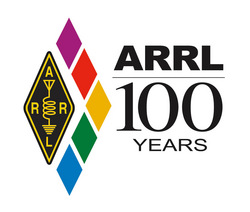 "The Centennial QSO Party was a huge success, and participation was way greater than anyone anticipated it would be when we were in the planning stages," said Norm Fusaro, W3IZ, Assistant Manager, Field Services and Radiosport Department. As a result, the window for operators to apply and pay fees for
"The Centennial QSO Party was a huge success, and participation was way greater than anyone anticipated it would be when we were in the planning stages," said Norm Fusaro, W3IZ, Assistant Manager, Field Services and Radiosport Department. As a result, the window for operators to apply and pay fees for 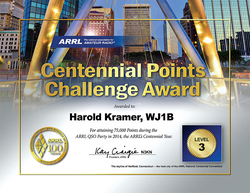 Qualifying for the Top Level Award requires 15,000 points. The Level 3 Award requires 7500 points, while the Level 2 and Level 1 awards require 3000 and 1000 points, respectively. Point totals will be printed on certificates.
Qualifying for the Top Level Award requires 15,000 points. The Level 3 Award requires 7500 points, while the Level 2 and Level 1 awards require 3000 and 1000 points, respectively. Point totals will be printed on certificates.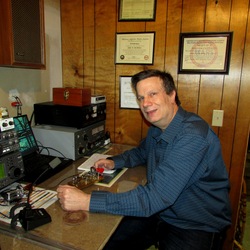
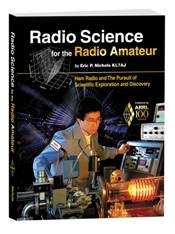 "It's certainly an honor to receive the William Orr Technical Writing Award!" Nichols said. "Thanks for your vote of confidence!"
"It's certainly an honor to receive the William Orr Technical Writing Award!" Nichols said. "Thanks for your vote of confidence!"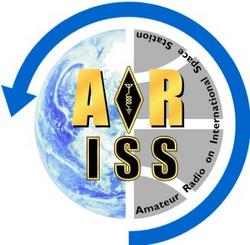 organizations as well as one event, now must submit acceptable equipment plans that demonstrate their ability to carry out the Amateur Radio event. Once the ARISS technical team approves an equipment plan, ARISS will attempt to schedule schools or organizations as their availability and flexibility match up with the opportunities offered by NASA. ARISS does not expect to be able to schedule all 15 schools on the list of semifinalists.
organizations as well as one event, now must submit acceptable equipment plans that demonstrate their ability to carry out the Amateur Radio event. Once the ARISS technical team approves an equipment plan, ARISS will attempt to schedule schools or organizations as their availability and flexibility match up with the opportunities offered by NASA. ARISS does not expect to be able to schedule all 15 schools on the list of semifinalists.
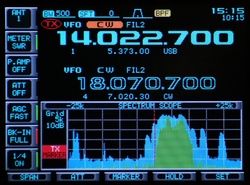
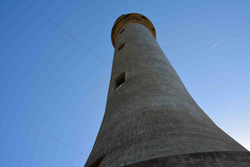
.jpg) The nearly century-old Fort Worth, Texas, based retailer -- once a go-to shop for electronic components and, at one point, even Amateur Radio and shortwave receivers -- has lost 90 percent of its value over the past year, despite efforts to refinance and modernize its stores. Before being de-listed on February 2, RadioShack's stock was selling for just 24 cents a share.
The nearly century-old Fort Worth, Texas, based retailer -- once a go-to shop for electronic components and, at one point, even Amateur Radio and shortwave receivers -- has lost 90 percent of its value over the past year, despite efforts to refinance and modernize its stores. Before being de-listed on February 2, RadioShack's stock was selling for just 24 cents a share.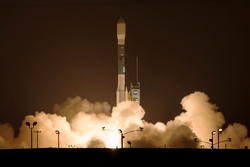
%20CubeSat.png)

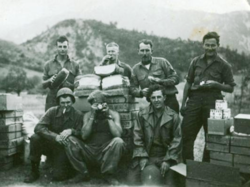


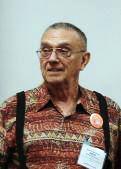
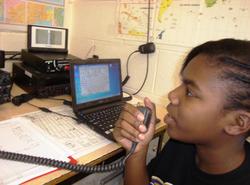 School Club Roundup is February 9-13! A reminder: The "Winter/Spring Term"
School Club Roundup is February 9-13! A reminder: The "Winter/Spring Term" 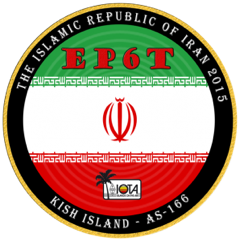 EP6T Team Hopes DXpedition will Boost Ham Radio in Iran: Some 68,000 contacts later, the EP6T DXpedition operators are back home after dealing with "extremely difficult circumstances" on Kish Island in Iran. The sponsoring
EP6T Team Hopes DXpedition will Boost Ham Radio in Iran: Some 68,000 contacts later, the EP6T DXpedition operators are back home after dealing with "extremely difficult circumstances" on Kish Island in Iran. The sponsoring 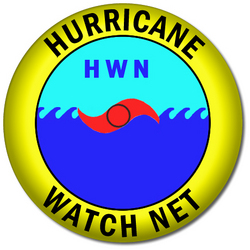 Hurricane Watch Net Stalwart Bob Botik, K5SIV, SK: Hurricane Watch Net (
Hurricane Watch Net Stalwart Bob Botik, K5SIV, SK: Hurricane Watch Net (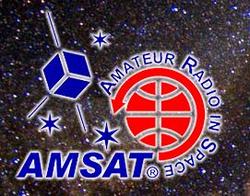 AMSAT-NA 2015 Space Symposium and Annual Meeting Set for October in Dayton: The 2015 AMSAT Space Symposium and Annual Meeting will take place October 16-18, at the Crowne Plaza in downtown Dayton, Ohio. The Space Symposium will include presentations on amateur satellite operating techniques and news from the amateur satellite world. The AMSAT-NA Board of Directors will convene, and the meeting will be open to AMSAT members.
AMSAT-NA 2015 Space Symposium and Annual Meeting Set for October in Dayton: The 2015 AMSAT Space Symposium and Annual Meeting will take place October 16-18, at the Crowne Plaza in downtown Dayton, Ohio. The Space Symposium will include presentations on amateur satellite operating techniques and news from the amateur satellite world. The AMSAT-NA Board of Directors will convene, and the meeting will be open to AMSAT members.  Deadline for Boston Marathon Ham Volunteers is February 10: Volunteer registration is open until February 10 for radio amateurs seeking to volunteer during the
Deadline for Boston Marathon Ham Volunteers is February 10: Volunteer registration is open until February 10 for radio amateurs seeking to volunteer during the 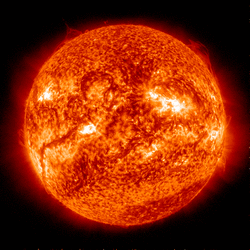 Twice over the past week the daily solar flux numbers had to be adjusted downward, due to overloading of the receiver at Penticton, the Canadian observatory which provides those readings. On January 29 the reading was 171.8. This was revised downward to an estimated 165, and again on February 4, when 154.4 was lowered to 145.
Twice over the past week the daily solar flux numbers had to be adjusted downward, due to overloading of the receiver at Penticton, the Canadian observatory which provides those readings. On January 29 the reading was 171.8. This was revised downward to an estimated 165, and again on February 4, when 154.4 was lowered to 145.







